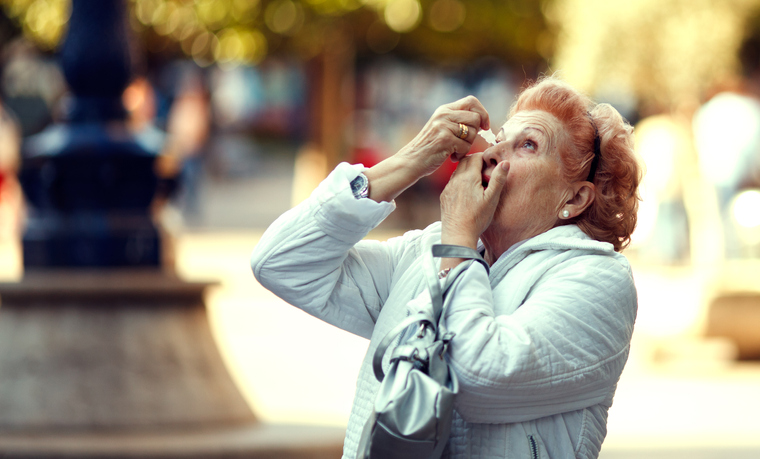 |
| About 60% of the highly adherent glaucoma patients were women, and women in general were more likely to be adherent than men. Photo: Getty Images. Click image to enlarge. |
Self-treatment with glaucoma medication has long been associated with adherence challenges, given the condition’s asymptomatic nature and the self-effort necessary. Poor medication adherence in patients with glaucoma has been linked with factors such as difficulty with eye drop administration, high costs of medication, side effects, not being physically able to apply the drops themselves and difficulties in remembering taking the medication at the right dose at the right time.
Researchers in Denmark investigated patterns in medication adherence in patients with glaucoma to investigate whether adherence in the early phase of the disease is associated with long-term adherence. They found that increasing age, female sex and low score on a metric called the Charlson Comorbidity Index (CCI), which quantifies the power of a comorbidity to influence mortality risk, each predisposed individuals to being medical adherent to glaucoma treatment. Being adherent in the first and the first two years of therapy, respectively, increased the probability of being adherent after five and 10 years from the start date, with the most profound association identified for those being adherent over the first two years.
This registry-based study included 30,100 glaucoma patients followed for 10 years, and glaucoma was identified from the Danish national registers by diagnosis of open-angle glaucoma and/or by redeemed prescriptions of glaucoma medication (eye drops).
Logistic regression models revealed that high adherence in the first year(s) of treatment was less likely among men (odds ratio; OR: 0.78), younger individuals and among those with a positive CCI score ≥3 (OR: 0.71). Around 60% of the highly adherent glaucoma patients were women, and women in general were more likely to be adherent than men. Adherence in the first year and in the first two years was associated with adherence in the fifth (OR: 4.55 in the first year/OR: 6.47 in the first two years) as with adherence in the 10th year with slightly lower estimates.
Being medication adherent was related to higher costs related to glaucoma meds after five and 10 years comparing with poor adherence.
“This may be explained by the poorly adherent group over time starting to experience an increase in disease severity (negative visual symptoms) and then may need more glaucoma medication or become more compliant which will increase their yearly cost for glaucoma-related medicines over time,” the researchers wrote in their paper.
Poor adherence was associated with a marked increase in long-term costs for hospital contacts. These increased costs in relation to hospital contacts could be directly associated with glaucoma but also arise from glaucoma—for example, accidents, fractures and concussions due to the increased risk of falling and unsafe driving among glaucoma patients, particularly among those with severe visual loss.
The team noted that their findings could “be of importance for physicians informing of the clinical value of adherence in the first and the first two years of treatment and may lead physicians to investigate other IOP-lowering options sooner in patients with poor adherence, particularly among those that are progressing at unsafe rates.”
Kolko M, Faergemann Hansen R, Dal LG, et al. Predictors and long-term patterns of medication adherence to glaucoma treatment in Denmark—an observational registry study of 30,100 Danish patients with glaucoma. BMJ Open Ophthalmol. 2024;9(1):e001607. |

